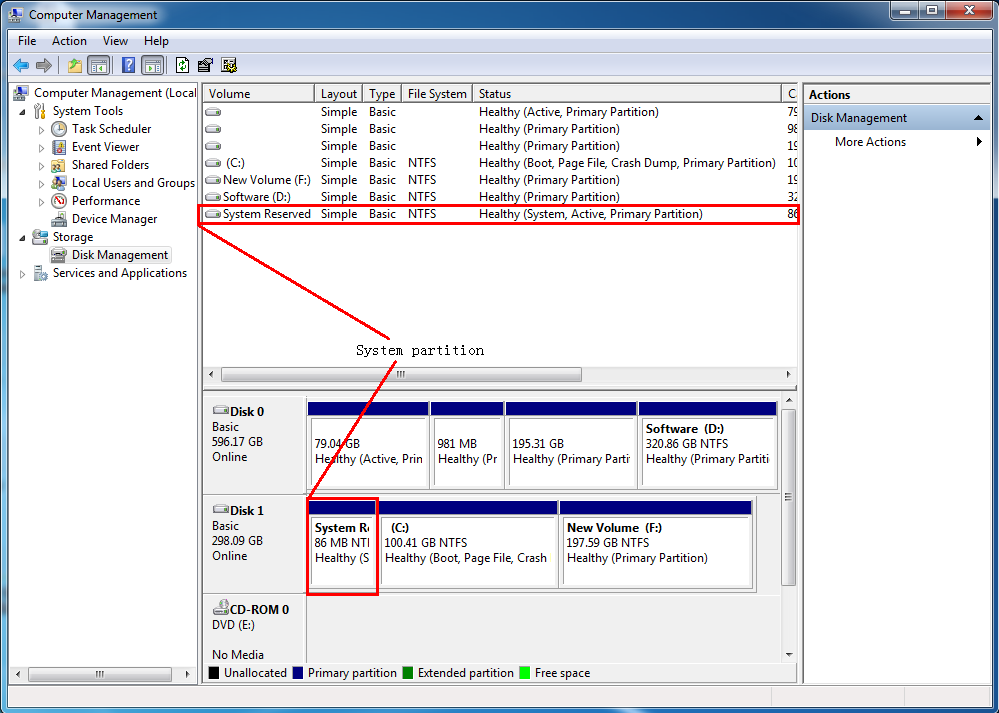

The MSR partition doesn’t receive a drive letter. This is a backup partition with the GUID label e3c9e316-0b5c-4db8-817d-f92df00215ae.

The MSR partition (Microsoft System Reserved) on the GPT disk is used to simplify partition management and is used for service operations (for example, when converting a disk from basic to dynamic). The default size of the EFI partition is 100MB (on advanced format disks with 4KB sectors the size of the EFI partition is 260MB). The EFI partition with the FAT32 file system is a mandatory partition on GPT disks on UEFI computers and has the GUID c12a7328-f81f-11d2-ba4b-00a0c93ec93b. Computer manufacturers or users can create their own partitions containing, for example, Windows Recovery Environment (Windows RE) in the winre.wim file, a partition with the system image backup provided by the OEM (allows to roll back to the original state of the computer), user partitions, etc. These partitions are created by the Windows Installer when you perform a clean OS install on an unformatted drive. Primary Windows partition (the partition containing Windows).Microsoft Reserved partition - 128 MB (partition type - MSR).EFI System Partition (ESP – Extensible Firmware Interface) - 100 MB (partition type - EFI).You should have at least the following partitions: GPT Hard Disk Partition Structure in WindowsĬonsider how the default partition table of a bootable hard drive with GUID partition table (GPT) on the UEFI computer should look like.

It is also strongly recommended to backup important data on a separate media. If you interpret the commands wrongly, you can accidentally delete all data on your hard disk. This guide implements working with disk partitions and is not recommended for beginners. Let’s figure out if it is possible to start Windows properly after deleting the EFI partition (with a Boot Manager and BCD configuration) without reinstalling the OS. Suppose that the EFI boot partition on your UEFI (non-BIOS) computer was accidentally deleted or formatted (for example, when you tried to remove an OEM recovery partition).Īs a result Windows 10/8.1/ 7 doesn’t boot correctly, cyclically prompting you to select the boot device ( Reboot and select proper boot device or insert boot media in selected boot device and press a key). The instructions in this post are relevant for all versions of Windows, from Win 7 to Windows 10. We’ll look at an easy way to manually recreate system EFI and MSR partitions in Windows, which will allow you to boot the OS after accidentally formatting or deleting an EFI partition. In this post we’ll show you how to manually restore an accidentally deleted Windows EFI boot partition on a UEFI computer.


 0 kommentar(er)
0 kommentar(er)
